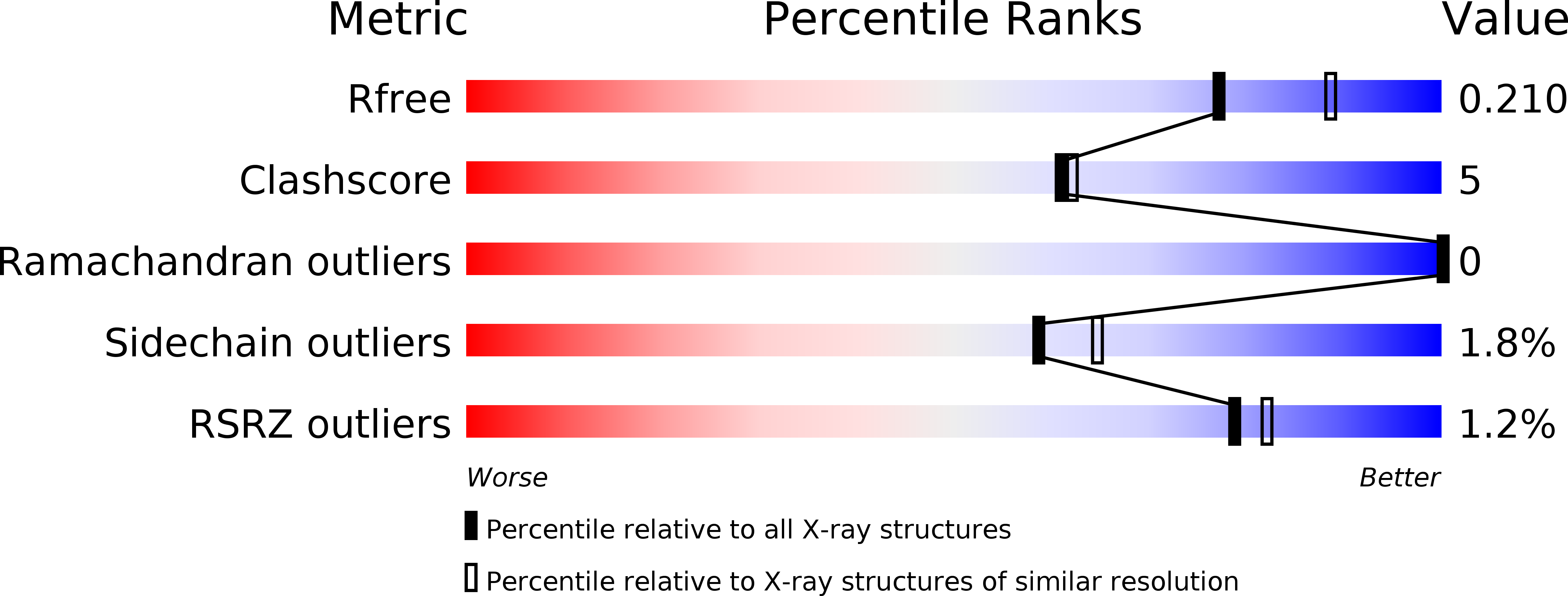Structural basis for misfolding in myocilin-associated glaucoma.
Donegan, R.K., Hill, S.E., Freeman, D.M., Nguyen, E., Orwig, S.D., Turnage, K.C., Lieberman, R.L.(2015) Hum Mol Genet 24: 2111-2124
- PubMed: 25524706
- DOI: https://doi.org/10.1093/hmg/ddu730
- Primary Citation of Related Structures:
4WXQ, 4WXS, 4WXU - PubMed Abstract:
Olfactomedin (OLF) domain-containing proteins play roles in fundamental cellular processes and have been implicated in disorders ranging from glaucoma, cancers and inflammatory bowel disorder, to attention deficit disorder and childhood obesity. We solved crystal structures of the OLF domain of myocilin (myoc-OLF), the best studied such domain to date. Mutations in myoc-OLF are causative in the autosomal dominant inherited form of the prevalent ocular disorder glaucoma. The structures reveal a new addition to the small family of five-bladed β-propellers. Propellers are most well known for their ability to act as hubs for protein-protein interactions, a function that seems most likely for myoc-OLF, but they can also act as enzymes. A calcium ion, sodium ion and glycerol molecule were identified within a central hydrophilic cavity that is accessible via movements of surface loop residues. By mapping familial glaucoma-associated lesions onto the myoc-OLF structure, three regions sensitive to aggregation have been identified, with direct applicability to differentiating between neutral and disease-causing non-synonymous mutations documented in the human population worldwide. Evolutionary analysis mapped onto the myoc-OLF structure reveals conserved and divergent regions for possible overlapping and distinctive functional protein-protein or protein-ligand interactions across the broader OLF domain family. While deciphering the specific normal biological functions, ligands and binding partners for OLF domains will likely continue to be a challenging long-term experimental pursuit, atomic detail structural knowledge of myoc-OLF is a valuable guide for understanding the implications of glaucoma-associated mutations and will help focus future studies of this biomedically important domain family.
Organizational Affiliation:
School of Chemistry and Biochemistry, Georgia Institute of Technology, Atlanta, GA 30332-0400, USA.



















